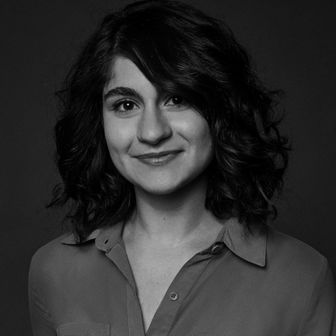
I’m utterly convinced that I’m in the small group of people for whom meditation does more harm than good. There’s something about sitting quietly, breathing deeply, and willing my brain to think about absolutely nothing that compels it to do the exact opposite. Give me five minutes on a yoga mat and I’ve not only run through my to-do list for the day, but also managed to get angry all over again at someone who was a bitch to me in the seventh grade. (My mind’s eye is extremely petty.)
That’s not to say I couldn’t use some calming down: My anxiety can best be described as “what Paris Hilton’s Chihuahua was probably feeling for all of the early ‘00s.” I mitigate it with distance running, which is a great way to clear my head while literally running away from my problems — but cardio isn’t exactly relaxing, and I rarely feel like I’m unplugging at any point of my day. (Refreshing my Twitter feed incessantly like a lab rat on cocaine probably can’t help matters either.) I often wondered why there wasn’t a type of meditation for people who are shitty at meditating. Turns out there is. It’s called a sound bath.
Like all other aspects of the mindfulness and wellness movement, sound baths — sessions that typically last for an hour, during which a practitioner plays various resonant instruments to lull your mind and body into relaxation — are quickly growing in popularity. Nate Martinez, a Brooklyn-based professional musician and certified sound-therapy practitioner, says that sound has been used as a healing modality since the ancient Greeks and Egyptians; it’s difficult to pinpoint how long sound baths in their current form have been around or who invented them, though he mentions the work done at the Integratron in Joshua Tree, California, over the past decade as a place of focus.
Sound baths have been experiencing a huge boom over the past year and a half, which Martinez attributes to people striving to find a way to deal with the nonstop influx of information and technology in our modern lives — and practitioners coming forward to make the experience more available. The sessions are also viewed as more accessible than traditional meditation. “There’s no judgment or question of ‘Am I doing this right?’” he says. “As long as you just sort of give in to the experience then you’re going to have a positive experience and get a little bit more grounded.”
But how do they actually work? “When sound frequencies move through a space, we are part of that space, and our bodies resonate with those frequencies,” Sara Auster, another popular New York–based sound-therapy practitioner (and musician and yogi) wrote to me. “Our body has the ability to ‘harmonize’ with different frequencies. In sound therapy, rhythms and frequencies are used to entrain our brainwaves. Entrainment can synchronize our fluctuating brainwaves by providing a pattern or stable frequency to which we can attune, similar to the effects of meditation.” Sure, sign me up.
Martinez had me over to his place in Carroll Gardens for a private session late one afternoon. As I soon as I walked through the door and took in the natural light, tidy bohemian-lite décor, and faint smell of incense, I found myself authoritatively offering up my highest and most annoying form of praise: “This is a great space.” Martinez himself was preternaturally calm — but not in a holier-than-thou way — warm, and highly professional. To start, I lay down on a mat in the center of the living room with a pillow beneath my head and one beneath my knees and strapped an eye mask over my face. Martinez sat a few feet behind my head, surrounded by instruments like tuning forks, a frame drum, and both Himalayan and quartz crystal singing bowls.
Martinez walked me through some light breathing exercises, then gradually built up the amount of sound in the room using his instruments, both singularly and in combination with each other. He started light tinkling and drum beats, which were incrementally paired with droning and vibrations until I felt fully enveloped by a rich swell of sound. I wish I could tell you that this had aided me in clearing my mind but, reader, it did not. I thought about what recipe to make with the several stalks of broccoli sitting in my crisper. I thought about how weird it was that Bobby Flay might be the father of January Jones’s baby. I thought about writing this article. For reasons that are still unbeknownst to me, I thought about former Republican candidate Ben Carson. And mostly I thought, Fuck, I’m really fucking this up, aren’t I?
But all was not lost. After that initial swell of sound, there was a slight intermission of sorts during which the sound died down to its initial levels, only to work back up to another all-encompassing crescendo. It was during that time that I felt my brain truly relax. I was entirely entranced by the music, and my mind let itself wander toward a particularly grounding trip I took to the desert once, which is as close as I’ll ever get to doing peyote. And then I slipped into a dreamy, half-asleep state. Before I knew it, our hour-long session was over.
Later that week, I opted for a group experience led by Auster at MNDFL, a recently opened Greenwich Village spot that bills itself as “New York City’s premier meditation studio.” (The lack of vowels tells you they’re serious.) I walked over after a hard day’s work at the blogging mines and entered a clean, airy space with a Madewell-store-buys-its-first-succulent vibe.
After slipping off my shoes and turning off my phone (mandatory), I entered a room that contained a mat, pillow, and blanket for each of the evening’s 18 participants — a setup that was actually not unlike naptime at a preschool. Now’s a good time to mention that my mom repeatedly had to be called to pick me up from preschool because I wouldn’t stop talking to the other kids during naptime. I was determined to not repeat that experience.
I had expected my fellow sound bathers to be an authentically wacky old-school hippie bunch, but this was a boutique studio in New York City, after all. The participants were mostly clad in breathable monochromatic fabrics with a requisite smattering of plastic-rimmed glasses in the crowd; nearly everyone was white and, statistically, I’m estimating that at least one person in there was midway through a juice cleanse. Auster began by leading us through breathing exercises in dulcet tones. There were no great swells of sound like my earlier experience, but rather a consistently light amount throughout.
“What we’re missing these days is that we’re not relaxing enough,” Auster tells me later. “We need to rest. And rest is different than sleep.” Sleep was certainly tempting though. Because the room was so dark and I was snuggled under a blanket — and exhausted — I felt myself lulled into a relaxed state much quicker than during my previous sound bath. Someone in the room — a kindred spirit, no doubt — definitely did fall asleep and started snoring very shortly into the session. All was going well — I felt warm, comfortable, relatively free of thoughts. And then, disaster struck.
About halfway through, I desperately needed to pee. I had used the bathroom right before the session, but to say that my bladder is gerbil-size would be generous. I was far enough from the door that there was no way to actually leave the room without disturbing the entire class, and while that might have added color to this piece, I did not want to be the asshole who ruined the sound bath for everyone else. I spent the remainder of the session trapped in my own body, concentrating on not getting too comfortable, because I also did not want to be the asshole who peed herself in New York’s premiere meditation studio.
That’s not to say it was all a wash. Listening to my interview with Auster after the fact, I was shocked at how calm my voice sounded on the recording — I was unrecognizably chill. And later that night, I slept the deep, peaceful sleep of someone who’d never been on the internet.





